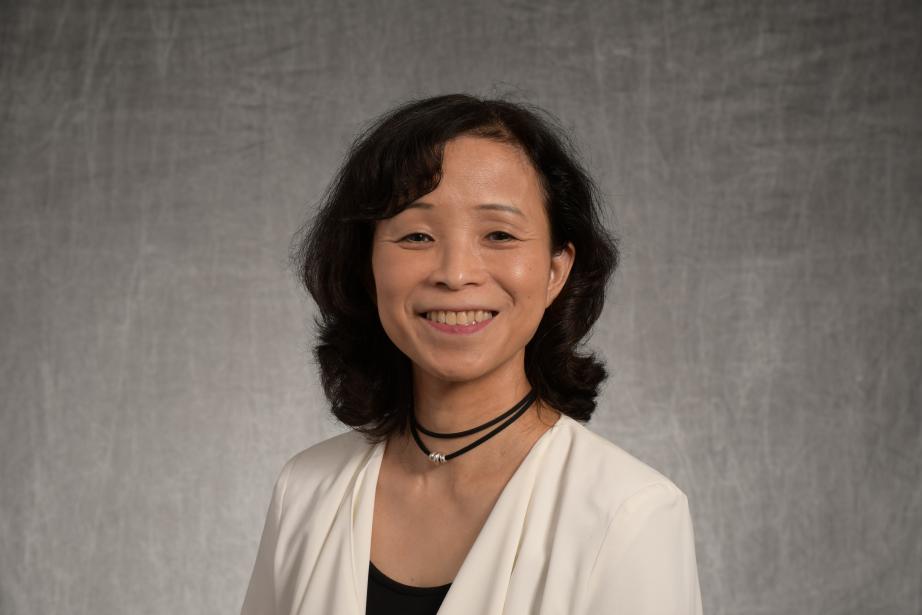B.A. in Psychology and Dance, Barnard College, Columbia University
M.A. in Dance Movement Analysis and Therapy, New York University
Ph.D. in Creative Arts in Therapy, Drexel University

Assistant Professor in Rider’s Department of Graduate Education, Leadership, and Counseling Dance/Movement Therapy (DMT)
College of Education and Human Services

B.A. in Psychology and Dance, Barnard College, Columbia University
M.A. in Dance Movement Analysis and Therapy, New York University
Ph.D. in Creative Arts in Therapy, Drexel University
Dance/Movement Therapy Theory & Practice I & II; Body Mind Integration through Movement I & II; Movement Observation, Analysis and Assessment; Clinical Applications of Dance/Movement Therapy; Counseling and Dance/Movement Therapy Practicum I & II; Counseling & Dance/Movement Therapy Internship I & II
Different areas of campus involvement outside of teaching at Rider University
Eri went to Barnard College as an undergraduate student, and it was there that she discovered her love of dance/movement therapy (DMT). As a freshman in a dance history class, she learned that dance was used as ritual and for healing in different cultures. “At that moment, I knew I had to do DMT,” she said.
Eri then went on to work briefly as an IT analyst at an American investment banking firm in Tokyo. “I had a dance related injury and thought that having life experience was essential to becoming a therapist,” she said. Following her undergraduate studies, Eri earned her M.A. in Dance Movement Analysis and Therapy at New York University, where she studied to become a dance/movement therapist. “I had to engage my mind, body and soul to become a grounded, fully present, embodied dance/movement therapist,” she said. After Eri earned her M.A., she explored working with different clinical populations and settings. However, in her work at an inpatient psychiatric hospital, Eri ultimately found working with adults who have mental illnesses and substance use disorders to be the most rewarding. “As difficult as it was to hear some of their stories, I learned a lot about human resilience and spirit,” she said.

I learn with the students and from them. I think they can sense that—that we are on this journey together, a journey of becoming.”
Dr. Millrod teaches the dance/movement therapy (DMT) courses within the M.A. in Clinical Mental Health Counseling program. Eri designed the DMT curriculum herself, utilizing the knowledge that she gained from her dissertation research. The DMT courses that she teaches use movement based experiential learning in an intentional manner. One example of a course she teaches is the movement lab course, "Body Mind Integration through Movement.” Eri designed this course with the student’s engagement in mind. “Students need to have the freedom to explore the body-mind connection, experiment with the different aspects of the DMT process, and gain self-awareness and self-knowledge without worrying about being right,” she said. Eri’s DMT courses are sequenced so that her students experience the creative processes of DMT before they study what the creative process is and how it contributes to healing and growth.
Eri’s students typically become dance/movement therapists in many different clinical settings. She explains, “They can work in psychiatric hospitals, addiction recovery centers, programs for eating disorders, schools for children with emotional and behavioral disorders, correctional facilities, rehabilitation centers, programs for intellectual and developmental disabilities, and medical centers for cancer treatment.” Once her students have the proper credentials, they can move to private practice.

It took me a very long time to feel that I had reached my growth potential as a clinician, but once I did, I wanted to grow more. I pursued my Ph.D. and it became clear that I wanted to give back to my profession through teaching and scholarship, which is why I am here at Rider University.”
To Eri, there are a lot of misunderstandings about dance/movement therapy and its purposes. “I break down DMT into digestible components. I focus on developing the mindset that is needed to work in a field like DMT, where art meets science,” she said. Eri brings classes to life by sharing her clinical experiences, and she works on creative ways to arouse curiosity in her students, so that using their mind-body becomes natural in understanding the aspects of DMT that cannot be articulated well in words. “The movement based experiential learning is key to keeping the theories alive and keeping them from becoming stale.” Eri approaches her teaching as a constructivist and enjoys constructing knowledge together. “I learn with the students and from them. I think they can sense that—that we are on this journey together, a journey of becoming.”
Eri is not only an exemplary professor, but a highly involved member of the Rider Community. She has been involved in some of Rider’s initiatives around diversity, equity, and inclusion, and has served on the task force for diversity, equity and inclusion for the Westminster College of the Arts. Eri also is serving on the search committee for a Chief Diversity Officer. Additionally, she supports the counseling students in the Clinical Mental Health Counseling program who run social justice support groups for BIPOC and their allies. She is also the faculty advisor for the Rider Dance Troupe.